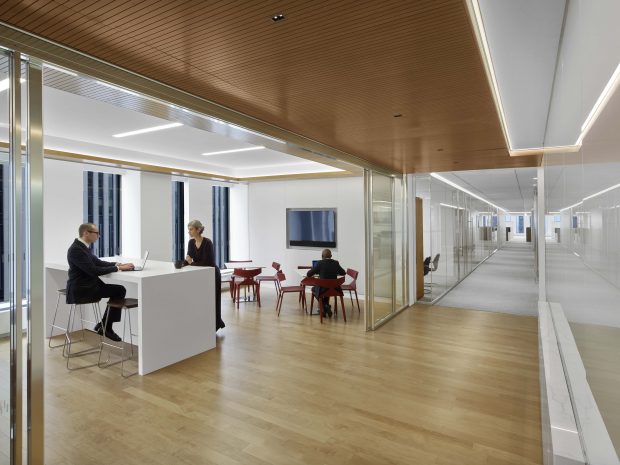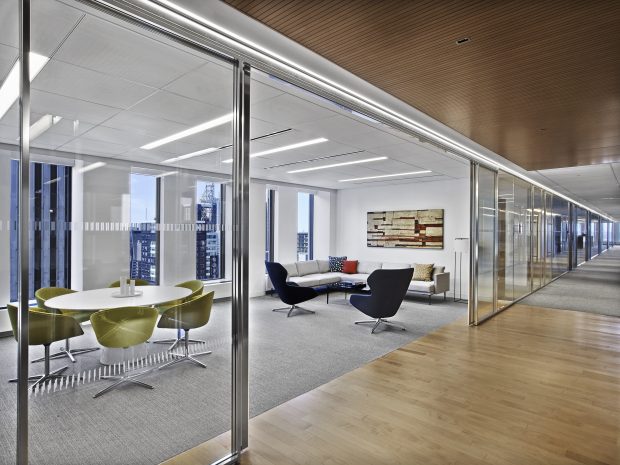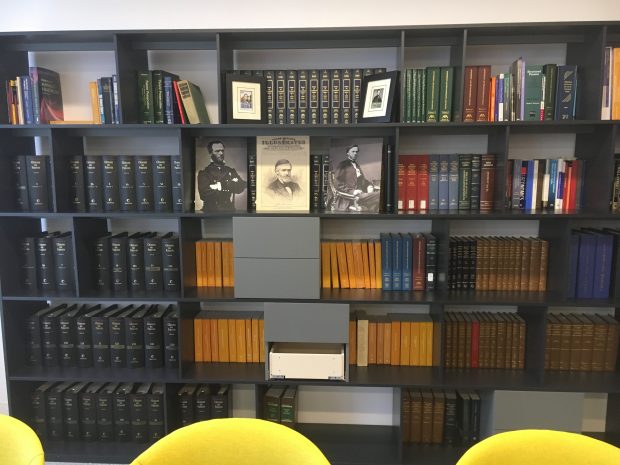
Eric Laignel Photography
If you’re going to spend most of your life there, it’s worth considering what you want out of a law office. Stunning views, a full-service gym, a door that closes, a sleep pod time machine thing, a bar — all important considerations. After all, there’s no reason the modern Biglaw office can’t offer all these and more.
So when Biglaw opens up a brand new office, lawyers everywhere want to know what bells and whistles the firm snuck into the new design.

The Hidden Threat: How Fake Identities used by Remote Employees Put Your Business at Risk—and How to Defend Against This
Based on our experience in recent client matters, we have seen an escalating threat posed by the Democratic People’s Republic of Korea (DPRK) information technology (IT) workers engaging in sophisticated schemes to evade US and UN sanctions, steal intellectual property from US companies, and/or inject ransomware into company IT environments, in support of enhancing North Korea’s illicit weapons program.
White & Case recently ditched its old digs for a new office a few blocks up the Avenue of the Americas, uncorking its bid to define the “modern” Biglaw office in the former home of McGraw Hill.
The results are pretty impressive.
First of all, there’s a lot of talk out there about what the “modern” law firm office — or the office of “the future” — might look like. Tradition is hard to buck in the legal community. Dark wood bookshelves, corner offices for rainmakers, private offices for all but the lowliest of professionals. For many, a new office should just replace the decor of yesteryear with… the exact same design. Lawyers generally don’t get a lot of points for originality. On the other hand, the rest of corporate America — and make no mistake, Biglaw firms are as much corporate entities as collegial partnerships of learned professionals — is embracing Silicon Valley’s culture of cool. Open! Collaborative! Games! GLASS! There’s a consulting community that swears this improves productivity, but can attorneys really work like programmers?
Will attorneys even want to work like programmers?

Gen AI: Your Legal Research Assistant, Not Your Replacement
Here's how you can spend more time practicing law, and less time sorting, sifting, and summarizing.
“The influence of clients cannot be overstated,” said Jack Pace, Executive Partner of White & Case’s New York office. He was discussing the open lounge areas that lean into the present corporate trend, but split the difference with multiple lounges and open-concept gathering areas on every floor. At the end of the day, attorneys still have offices (even if the most junior have to share), but there’s a whole lot of glass.
While several firms have opted for the glass office in recent years, most offer some sort of frosted glass design to give at least quasi-privacy to an attorney working alone in their office. White & Case went full-bore, providing floor to ceiling glass offices for everyone. While it may be a bit of a culture shock, there is a logical reason beyond merely embracing the look that most clients are used to in their own workspaces: light. Footprints are tricky things. Too narrow and an office feels cramped, while too big and the firm is left with wasted square footage and depressing internal offices. The abundance of glass gives internal offices along one of the firm’s east-west “avenues” an exterior view (if through another’s office or a lounge) and keeps things bright.

Eric Laignel Photography
Not that this is much consolation if you’ve been working for 48 straight hours and everyone can look in to see your state of dishevelement, but there are showers!
As for the common areas, like most, we’ve harbored skepticism that hippie commune seating areas are appropriate for a Biglaw office. A couple years ago, when Paul Hastings announced that the most junior of associates would work in exclusively open environs, readers overwhelmingly balked at the idea in a poll.
It may be hard to imagine that attorneys — of any generation — ditching the friendly confines of a private office to sit in couches in the middle of the floor, but Pace and associate Julia Bell, who served on the art committee, swear they get used. During my tour the areas were lightly populated, but certainly not unused. A pair of attorneys congregated in the communal work area for a lunch meeting, and at another table a computer and water bottle proved some temporarily absent lawyer was hard at work.
Perhaps there’s a measure of “if you build it, they will come” to the open concept. Pace said that the trick to building common areas that work is placing “open spaces in areas that will create neighborhoods.” A lone seat in the hallway outside a partner’s office isn’t going to get much traction. An area where a group might naturally gravitate will. He pointed out that the areas overlooking the Hudson become more crowded with attorneys as sunset approaches and lawyers can sit in a comfy chair and take in the spectacular westward views from over their computer screens.

Eric Laignel Photography
Now… obviously those are models placed there for marketing purposes — no one looks that cookie-cutter at a law firm these days — but you can see the general idea.
Here’s another shot of a corresponding area on a different floor:

Eric Laignel Photography
These pictures show two different takes on the two areas in the middle of the north and south sides of each floor, while the open areas on the east and west side are more of an atrium style. Practice groups had a little bit of freedom in designing their lounges. M&A has a TV lounge broadcasting CNBC. Antitrust has a mini-library and shrine to John Sherman.
Yes.

Pace, an antitrust litigator himself, revealed even more Sherman memorabilia — personal letters and even a baseball card for the lucky kid collecting all the great 19th Century Legislator Series.
And while the overwhelming majority of attorneys have their own offices, one prominent lawyer opts for an entirely open experience — White & Case Chair Hugh Verrier. About one-third of one of the firm’s six practice area floors is completely open concept, and Verrier placed his desk in this area.
That should squelch any whining from partners upset that there aren’t any corner offices.
Wait… there aren’t any corner offices? Well let’s discuss that on the next page….